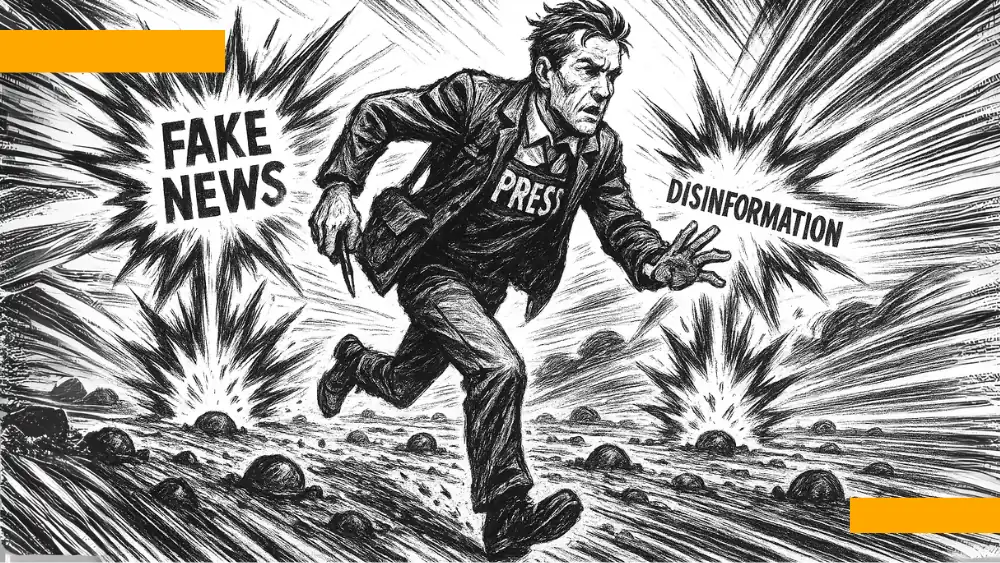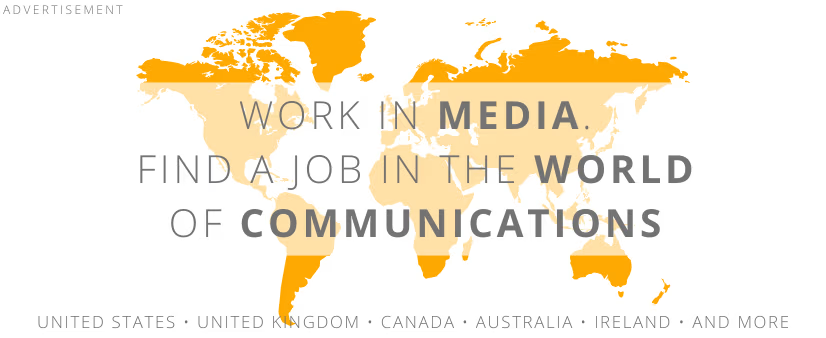 ilustracja: DALL-E
ilustracja: DALL-EUser Generated Content, or UGC, is changing the way news is created. It offers quick access to information from places traditional journalists often cannot reach. However, the report “The Importance of UGC Verification in Building Trust in News” by Reuters Institute makes it clear: without rigorous UGC verification, media risk losing audience trust.
We fear false information
Audiences are less likely to visit newspaper websites directly or use news apps. Reuters Institute data shows that in 2024 only 20% of users still choose traditional news access channels as a main and first source. Most seek information on TikTok, WhatsApp, or YouTube.
In the same study, 59% of respondents admitted they worry about the truthfulness of online content. Fear of disinformation is growing, and audiences are witnessing more false news.
| Topic | Percentage |
|---|---|
| Politics | 36% |
| COVID-19 | 30% |
| Cost of living crisis | 28% |
| Israeli-Palestinian conflict | 27% |
| War in Ukraine | 24% |
| Climate and environment | 23% |
| Migration | 21% |
It is important to note that the topics where false content appears most often are socially and politically emotional. Politics, the pandemic, wars, and the economic crisis - in these areas disinformation can lead to real social tensions.
Popularity over credibility
UNESCO research shows that 41.6% of internet users assess the truthfulness of content based on its popularity - the number of likes and views. This means that a large part of users trust what is "trending" rather than what is verified. In practice, this promotes the spread of unverified materials, which reach public awareness faster than verified news.
Reuters points out that media must work even faster and more accurately in this reality. Otherwise, they risk becoming a channel for disinformation.
The report recalls a loud example from 2020, when during the conflict on the India-Pakistan border, a video allegedly showing a military attack went viral. In reality, it was footage from the video game "Arma 2".
False information that quickly gained popularity fueled tensions between countries and showed how easily UGC can affect public opinion if media do not implement proper verification procedures.
Model verification: earthquake in Japan
Reuters cites an example of successful verification during the earthquake in Ishikawa, Japan, at the beginning of 2024. A video showing a landslide quickly appeared on social platforms. The Reuters Visual Verification Team immediately took action:
- checked the file`s metadata (date, location, device),
- contacted the author and obtained the original,
- compared the landscape with Google Street View images,
- confirmed the authenticity of the place with current satellite photos.
This multilayered approach allowed Reuters to quickly and confidently verify the footage. Direct contact with the author and thorough checking of spatial data prevented the spread of a false report.
The scale of the problem keeps growing
Reuters does not hide that the scale of challenges related to UGC is growing faster than the technological capabilities of newsrooms. UNESCO reported that 62% of digital creators admit to sharing content without checking its authenticity.
Additionally, the development of artificial intelligence means more realistic deepfakes are emerging. According to a Reuters Institute study, respondents fear that within five years artificially generated images and videos will be indistinguishable from real ones.
How newsrooms should act - specific recommendations and an example
Reuters proposes a set of specific actions that newsrooms should implement when working with UGC:
- Verify metadata: Every recording should be analyzed for date, place, and device type. Example: after the earthquake in Japan, metadata confirmed the video matched the time of the event.
- Check the event location: Use Google Street View, satellite images, and maps to compare the landscape with the recording. In Japan, the terrain matched the Google Maps topography.
- Contact the author of the recording: Obtain original files. Without talking to the author, there can be no certainty about the source`s authenticity.
- Combine technological analysis with journalistic work: Technology is a tool, but it is the journalist who draws the final conclusion about the credibility of the content.
- Create global verification teams: Reuters ensures 24/7 content checking thanks to teams in Beijing, Bangalore, Gdansk, London, Mexico City, and Singapore. This way, local events quickly reach verification.
Example of action: when an amateur video appeared after the earthquake in Japan, Reuters confirmed its authenticity within a few hours by combining a conversation with the author, metadata analysis, and comparisons with photographic documentation of the area. Such procedures should become standard wherever newsrooms work with user-generated materials.
* * *
The report “The Importance of UGC Verification in Building Trust in News” is based on data from the Reuters Institute Digital News Report 2024, UNESCO research, and case analysis of UGC verification. It uses specific examples and the experiences of the Reuters Visual Verification team. The full report is available for free at https://go.reuters.com/LP=84
COMMERCIAL BREAK
New articles in section Media industry
Advertising market 2025. Poland, Europe and the World
Marcin Grządka
The global advertising market is growing by 8.8% in 2025 and will reach a value of 1.14 trillion dollars. The industry result in Europe records slightly lower dynamics, at the level of 5.8%. In this comparison, Poland performs clearly above the average. We will record an increase of 8.9% this year and a value of 18.56 billion PLN - estimates WPP Media in the annual report "This Year Next Year".
The print media market 2025. Three global trends
Krzysztof Fiedorek
The market value is 359.53 billion dollars, yet the erosion is visible to the naked eye. The decline for newspapers will amount to -2.3 percent. Despite this, print retains strength: it generates 76 percent of subscription revenues and enjoys 82 percent consumer trust. The future of the industry is defined by hybrid strategies and niche specialization.
Journalism in the age of AI. Why people prefer humans over machines
Krzysztof Fiedorek
Only 12% of people accept news created solely by AI, while 62% prefer those written by humans. At the same time, only 19% notice labels indicating the use of artificial intelligence, while younger audiences ask AI to explain the content to them. These are the findings of the Reuters Institute report on artificial intelligence in media.
See articles on a similar topic:
Paid journalistic content. Market trends and forecasts by Reuters Institute
Krzysztof Fiedorek
Only 18 percent of internet users pay for online news access, and the rate has not increased for the third year in a row. Norway sets records with 42%, while Greece does not exceed 7%. Globally, nearly one in three subscribers cancels after a year.
Artificial Intelligence is ALREADY Outperforming Humans in Creativity
Krzysztof Fiedorek
ChatGPT, an AI model based on the GPT-4 engine, achieved better results than the vast majority of students in the standard Torrance Test of Creative Thinking (TTCT), which evaluates creativity. The study was conducted by researchers from the University of Montana.
Media in Poland 2022. How Poles Watch, Listen, Read, and Surf the Web
Krzysztof Fiedorek
Nearly two million Poles have access to a TV but do not watch television. For radio, the analogous group amounts to 8% of radio owners. Two-thirds of Poles reach for printed press, even occasionally, while the number of mobile internet users exceeds desktop users by nearly three million.
Who Reads the Press? Studies on Credibility, Reach, and Effectiveness
Sylwia Markowska
Press for advertising clients is an effective medium for building brand trust, fame, and popularity. According to global studies, it is one of the media with the highest return on advertising. Data collected by Polskie Badania Czytelnictwa (Polish Readership Research) indicates that the press also has exceptionally high ad visibility rates, as reading requires full concentration on content.





























